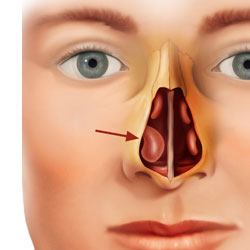If you have difficulty breathing due to a nasal obstruction, your ENT physician may have diagnosed you with turbinate hypertrophy. Turbinates, which are located within the sidewalls of the nasal cavities, warm and humidify air. If the turbinates are enlarged, it may become difficult to breathe. A turbinate reduction is a surgical procedure designed to reduce the size of your turbinates, thereby helping you to breathe better through your nose.
This surgery may be performed in the operating room under general anesthesia as an outpatient procedure, meaning that patients typically go home the same day as the surgery. In many cases, this procedure is performed in conjunction with a septoplasty. In some instances, this procedure can be performed in the office under local anesthesia.
The goal of turbinate reduction surgery is to reduce the size of the turbinate while preserving the lining of the turbinate. The turbinates normally function to warm and humidify inhaled air, and so it is important that the turbinate not be removed completely because this can result in a very dry, crusty nose. Occasionally, turbinate tissue will re-grow after turbinate surgery, and the procedure may need to be repeated.
There are a variety of surgical techniques that may be used to reduce turbinates, and we encourage you to speak with your ENT physician about the benefits of each one. These techniques include:
- Partial resection
- Cauterization
- Coblation
- Radiofrequency reduction
- Microdebrider submucosal resection
Cauterization, coblation, and radiofrequency reduction are techniques that shrink the turbinate tissue without removing the tissue or bone. During these techniques, the turbinate tissue is heated with a specialized device, causing scar tissue to form over time and shrink the turbinate.
During microdebrider submucosal resection, a specialized instrument is used to remove the tissue within the turbinate through a small opening while, at the same time, preserving its lining. As the turbinate heals, it will be much smaller than it was before surgery. Nasal packing may or may not be placed in the nose at the end of the procedure.
After surgery, the majority of patients will experience immediate, significant improvement in their symptoms. However, it may take some patients several weeks before they feel substantially better or see improvement because it takes time for the nose to fully heal. Remember that post-operative nasal congestion may be related to a number of factors including packing, crusting, and normal post-surgery swelling. Be patient, follow your post-operative care instructions, and follow up with your surgeon.
Some patients experience minimal pain after surgery, while others may experience significant pain for several days. You will be prescribed pain medication after surgery. If you prefer, you can take over-the-counter Tylenol instead.
It is common to feel tired in the first days to weeks after surgery. Remember to take it easy while your body is recovering.
Bleeding after surgery
It is common to see blood-tinged nasal secretions during the first week after surgery. It is helpful to keep your head elevated and avoid blowing your nose. If you need to sneeze, do so with your mouth open to reduce pressure in your nose.
It is NOT normal to have heavy amounts of bleeding after surgery. If you have significant bleeding that does not stop after holding pressure on your nose for several minutes, or if you are concerned that you are bleeding too much, call our office or on-call number immediately, or go to the closest emergency room for further evaluation.
After surgery patients should avoid blood-thinning medications until cleared by their surgeon.This includes medications such as:
- Aspirin
- Ibuprofen
- Advil
- Aleve
- Motrin
- Coumadin
- Plavix
- Herbal medications
- Vitamins
Return to Work/ School
Plan to take some time off after surgery. While some patients will be ready to go back to work in a matter of days, others will need 1-2 weeks to recover. When you can return to your routine depends upon several factors, including:
- The extent of your surgery
- The nature of your work
- Your recovery experience
If you have a desk job, you may be able to go back to work before the end of a week, but expect to be tired and limit your work demands. If you have a job that demands strenuous labor, you may need to take 2 weeks off until your body has time to heal. Be patient. Pushing yourself too hard or returning to work too soon may slow the healing process.
Medications
Your surgeon may prescribe medications for you to take after surgery, which may include antibiotics and pain medication. Take these as directed.
Packing
You may or may not have packing and/or splints in your nose after surgery. There are two types of packing. One is absorbable and will dissolve on its own with time and regular saline irrigations. The other is not absorbable and will be removed by your surgeon at your follow-up visit. Please discuss this with your surgeon and ask any questions you may have.
Saline Irrigations
Your surgeon may instruct you to regularly spray or irrigate your nose with saline after surgery. These irrigations help facilitate your recovery after surgery and help to clean and moisturize your nose and sinuses. Click here for more information on how to perform a saline irrigation.
RISKS OF TURBINATE REDUCTION
As with any surgical procedure, turbinate reduction does have associated risks. Fortunately, the risk of a complication is very small, but it is important that you understand the potential complications and speak with your surgeon about any concerns you may have.
-
- BLEEDING: Most nasal surgery involves some degree of blood loss, which is generally very well tolerated. However, very rarely, significant bleeding can occur and require termination of the procedure. Blood transfusion is rarely necessary and is only given in case of emergency. You should avoid any blood thinning medications including aspirin, ibuprofen, Advil, Motrin, Aleve, and herbal and vitamin supplements for 10 days prior to surgery.
-
- PERSISTENT SYMPTOMS: The goal of surgery is to improve the structural problems that are leading to nasal blockage. A large majority of patients (over 90%) have significant improvement after surgery. However, many different factors can impact the final outcome, and some patients may have persistent nasal obstruction after surgery. In very rare instances, patients may notice no improvement or worsening of their obstruction symptoms. Occasionally, turbinate tissue will re-grow after turbinate surgery, and the procedure may need to be repeated.
-
- TOXIC SHOCK SYNDROME: This is a very rare infection that can occur in the nose, usually when packing is placed, but sometimes when no packing is used. This is a life-threatening infection and requires immediate treatment. If you note a change in your blood pressure, heart rate, fever, and skin discoloration, please notify our office immediately.
- OTHER RISKS: Other uncommon risks of surgery include: alteration of sense of smell and/or taste, facial pain, change in the resonance or quality of the voice, and nasal dryness and/or crusting.
At the Raleigh Capitol Sinus & Allergy Center, our experienced surgeons welcome the opportunity to discuss your treatment options with you and answer any questions you may have.
We want to provide excellent services for our patients; for this reason, we ask our patients not to send their medical questions to us through our social media pages. Patients may send questions via our secure, encrypted server on our patient portal or they may contact our office for assistance.

